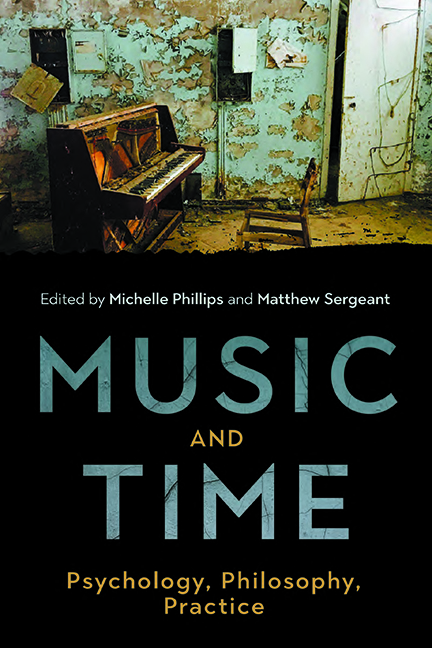5 - Ensemble Timing in String Quartets
Published online by Cambridge University Press: 07 October 2022
Summary
In this chapter we examine music ensemble timing. This process, in which musicians watch and listen to sense each other and so adjust the timing of their motor actions in order to maintain good ensemble synchronisation, may be considered an example of sensorimotor synchronisation. We recount how experimental studies of the act of tapping along to a metronome – one of the simplest forms of sensorimotor synchronisation – led to the development of an internal clock model, in which self-perceived errors in synchrony between a person's taps and the metronome's beats drive phase corrections to the timing of that person's internal clock. We go on to expand this model to account for the maintenance of ensemble timing in string quartet performance. We assume each player has their own internal clock which is undergoing constant adjustment according to perceived synchrony errors between them and each of their three colleagues. Such a model is mathematically linear and describes phase correction between players. We conclude the chapter by noting that a recently developed oscillator model points the way towards a complementary, non-linear perspective on these timing adjustments between players. Both the linear and non-linear models make important contributions to our understanding of the science behind music ensemble timing, an understanding that could one day inform new approaches to rehearsal technique, and even stylistic variation, in music-making.
Introduction
Playing music in time – whether to an internally generated pulse or to an external signal such as a click track – is a complex task that relies on a number of cognitive mechanisms including perception, attention, memory, and action. In many musical styles, the desired timing of playing can be quite complex, with intended large-scale or local fluctuations in tempo or purposeful deviations from the beat. Fluctuations in the cognitive mechanisms during performance, as well as changes in neurophysiological factors affecting the muscles such as fatigue and stiffness, may result in additional, unintended variability in an individual musician's timing performance (as also discussed in Chapter 2). Despite this variability, musicians must be able to predict and adjust the temporal progression of their music-making in order to achieve their desired musical expression. When musicians play together in groups, additional challenges are put upon these mechanisms.
- Type
- Chapter
- Information
- Music and TimePsychology, Philosophy, Practice, pp. 73 - 96Publisher: Boydell & BrewerPrint publication year: 2022



